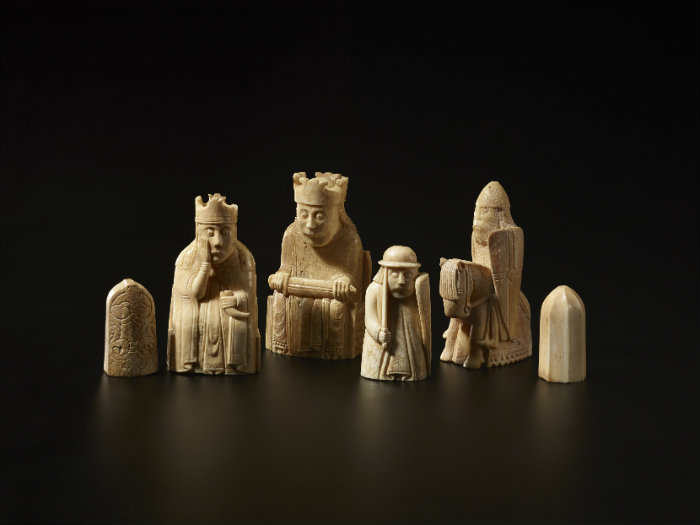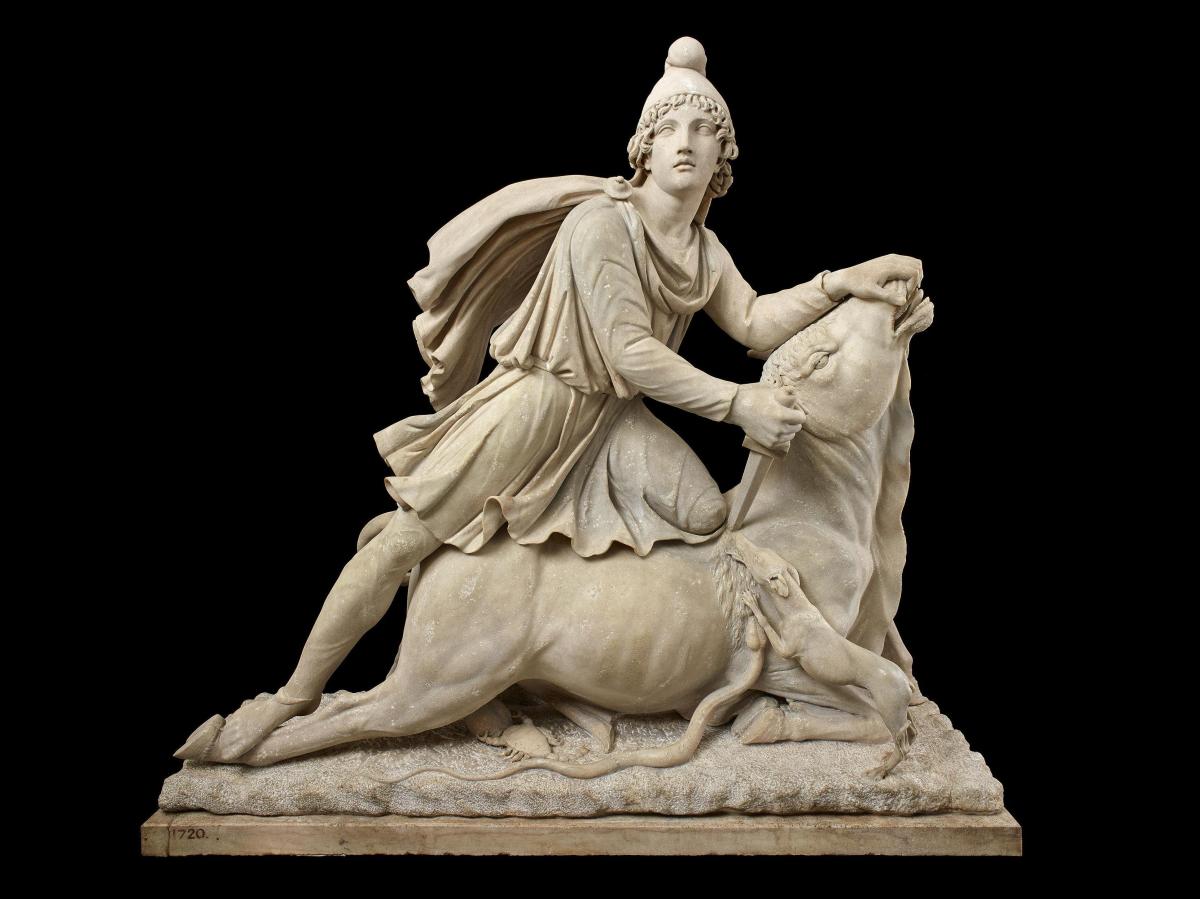Statue of Mithras. Marble, 100–200 CE, Rome, Italy. © Trustees of the British Museum.
This wide-ranging exhibition is drawn almost exclusively from the vaults of the British Museum and features work spanning from humanity’s early stone tools, made some 1.8 – 2 million years ago, to a prototype wireless computer from the 1990s – the latter being an honourary Australian exhibit and the 101st object in the exhibition. But despite its expansive range, the details left unexplained cause some frustration.
For example, when viewing A History of the World in 100 Objects (originally a radio series and later a book by curated by the British Museum’s Director, Neil MacGregor) one recalls the ongoing dispute over the ownership of the Parthenon Marbles (aka the Elgin Marbles), removed from Greece between 1801 – 1812 under controversial circumstances and the subject of ongoing argument about repatriation. This contentious part of history is ignored.
Viewed collectively, many of these 100 objects and the circumstances under which they were obtained are arguably as much a history of colonialism as a history of the world: artefacts sourced from ancient Egypt, Ur and Nineveh as well as the lost civilisations of the Olmec, Maya and Inca and gathered together at the heart of the British Empire. This less palatable history goes undiscussed on the ‘didactics’ or labels accompanying each exhibit, though not unacknowledged, given that one of the objects is a collection of bronze and brass ‘manillas’ used as currency by slave traders in West Africa from the 15th to the 20th century. The result feels somehow dishonest, a failure by the curators to acknowledge an uncomfortable history that is hidden in plain sight.
Seen through Australian eyes the accompanying texts frustrate on another level, again for what goes unsaid and unexplained.
An Ice Age engraving of a bison on a chunk of limestone from approximately 13,000 – 14,000 years old is a delicate and beautiful work, but at the same period, Australia had already been settled for at least 37,000 years. Providing a contrasting acknowledgement of Aboriginal Australian history alongside key artefacts in the exhibition’s explanatory texts would have provided greater depth and resonance overall, as well as acknowledging the world’s oldest continuous culture in a simple yet respectful way.

The Lewis chessmen. Walrus ivory, about 1150–1175 CE, found on the Isle of Lewis, Scotland, probably made in Norway © Trustees of the British Museum.
Another criticism can be made concerning access to the exhibition itself, which this writer visited between Christmas and New Year. Doubtless Museum management were delighted by the volume of visitors, but queuing for an hour to gain admission, and then shuffling slowly from exhibit to exhibit due to the number of visitors present, was a definite distraction – especially when accompanied by an elderly relative, for whom the long delay was an exhausting experience. For future blockbuster exhibitions at the National Museum, perhaps timed entry tickets might assist with more comfortable viewing?
But what of the exhibits themselves? There are some truly glorious works on display: a bust carved from greenstone dating from Mexico’s Olmec civilisation circa 900 – 400 BCE, and another fashioned primarily from bronze of the first Roman Emperor, Caesar Augustus, circa 27 – 25 BCE. Smaller works, such as an Incan gold llama from 1400–1550 CE and a selection of the famous Lewis Chessmen, carved from walrus ivory and dated to circa 1150 – 1175 CE, are no less exquisite.
Equally fascinating are selections of crockery, which speak of more everyday concerns rather than the grand rule of kings; more ephemeral objects, such as a selection of US political campaign badges; and more contemporary items, including a Papua New Guinean war shield, which speak to the intermingling of traditional and Western cultures.
The exhibition is grouped chronologically, save for the first item on display – the inner coffin of Shepenmehyt, an Egyptian temple musician who was mummified about 600 BCE, whose memorial serves to illustrate what we can learn from such artefacts.
While providing a sense of the unfolding tapestry of history, often through the legacies of rulers rather than the common folk of each era, the chronological arrangement – grouped together under rather general titles including ‘The First Cities’ and ‘Ritual and Belief’ occasionally frustrates; a more tightly curated thematic gathering, tracing the development of the written word in one section, of humanity’s unending capacity for war in another, might have provided greater insight into the true history of the world.
Rating: 3.5 stars out of 5
A History of the World in 100 Objects from the British Museum
National Museum of Australia, Canberra
Until 29 January 2017





